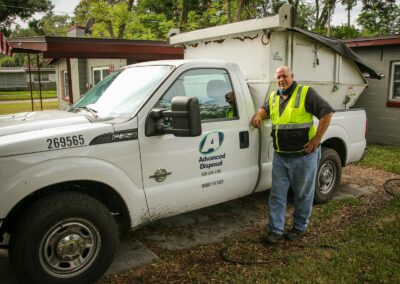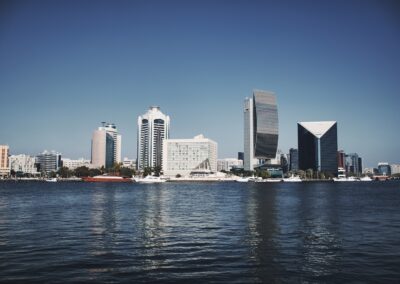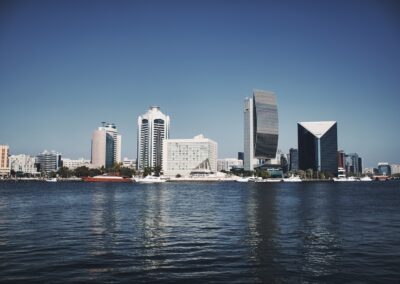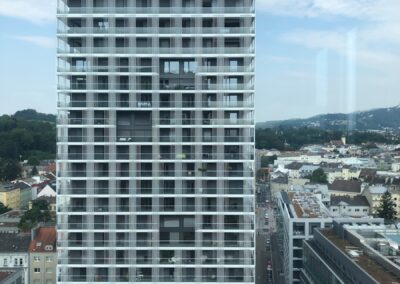Addressing Connectivity and Communication Challenges
Introduction to Ocean Urbanization Connectivity
Ocean urbanization connectivity is a critical aspect of developing sustainable and functional floating cities. As urban centers expand into the ocean, ensuring seamless communication and connectivity with the mainland and other urban centers becomes a paramount challenge. For regions like Saudi Arabia and the UAE, which are at the forefront of innovative urban planning, addressing these connectivity issues is vital for the success of their ambitious ocean urbanization projects.
Floating cities, envisioned as a solution to overcrowding and land scarcity, offer unique opportunities for sustainable development. However, the isolation of these urban areas necessitates robust connectivity solutions to ensure they remain integrated with existing infrastructure. The integration of advanced technologies such as artificial intelligence (AI), blockchain, and the Internet of Things (IoT) plays a crucial role in overcoming these challenges, providing a framework for efficient and reliable communication.
Technological Integration for Seamless Connectivity
Artificial Intelligence in Communication Networks
AI has become an indispensable tool in enhancing connectivity in ocean urbanization projects. By utilizing AI-driven algorithms, urban planners can optimize network performance, predict potential issues, and ensure uninterrupted communication. AI can analyze vast amounts of data to streamline the operation of communication networks, making real-time adjustments to maintain connectivity. This technology is particularly useful in managing the complex logistics of floating cities, ensuring that residents and businesses have continuous access to essential services.
In Dubai, AI is already being employed to enhance the city’s communication infrastructure. The Dubai Smart City initiative leverages AI to monitor and manage urban systems, ensuring seamless connectivity across the city. Applying similar technologies to ocean urbanization projects can significantly improve their efficiency and integration with the mainland.
Blockchain for Secure Communication
Blockchain technology offers a secure and transparent method for managing connectivity in floating cities. By creating decentralized networks, blockchain can ensure data integrity and security, making it an ideal solution for maintaining reliable communication channels. This technology can facilitate secure transactions and information exchange between floating cities and the mainland, reducing the risk of data breaches and ensuring the privacy of residents.
In Saudi Arabia, blockchain is being explored for various applications, including secure communication in urban planning. The implementation of blockchain in ocean urbanization projects can enhance the reliability and security of communication networks, fostering trust and confidence among stakeholders.
IoT for Integrated Urban Systems
The Internet of Things (IoT) is pivotal in creating interconnected urban environments. In floating cities, IoT devices can monitor and manage various aspects of the urban infrastructure, from energy consumption to waste management. By connecting these devices to a central network, urban planners can ensure efficient operation and maintenance of the city’s systems. IoT enables real-time data collection and analysis, allowing for proactive management of connectivity issues.
In the UAE, IoT is being utilized to create smart cities with integrated urban systems. The application of IoT in ocean urbanization projects can enhance their functionality, ensuring that all systems operate harmoniously and efficiently. This technology also facilitates the remote management of urban infrastructure, reducing the need for on-site intervention.
Case Studies in Connectivity Solutions
Dubai’s Floating City Initiatives
Dubai has been a pioneer in exploring the potential of floating cities. The city’s commitment to innovation and sustainability is evident in its various initiatives aimed at integrating advanced technologies into urban planning. Projects such as The World Islands demonstrate Dubai’s ability to address connectivity challenges through technological integration. By employing AI, blockchain, and IoT, these floating urban areas maintain seamless communication with the mainland, ensuring their viability and success.
Dubai’s approach to floating cities involves a holistic view of urban planning, where connectivity is prioritized alongside sustainability and functionality. The city’s investment in cutting-edge technologies ensures that its floating urban areas remain connected and integrated with the broader urban landscape.
Riyadh’s Vision 2030 and Ocean Urbanization
Saudi Arabia’s Vision 2030 outlines a comprehensive plan for sustainable development, with ocean urbanization playing a significant role in this vision. Riyadh, as the capital city, is spearheading efforts to integrate advanced connectivity solutions into its urban planning initiatives. The city’s focus on renewable energy, waste management, and water recycling is complemented by its commitment to enhancing communication networks through AI, blockchain, and IoT.
Riyadh’s strategy for ocean urbanization involves creating self-sustaining urban environments that are seamlessly connected to the mainland. By leveraging advanced technologies, Riyadh aims to build resilient and efficient floating cities that contribute to the country’s long-term sustainability goals.
International Collaborations and Knowledge Exchange
The development of connectivity solutions in ocean urbanization projects offers opportunities for international collaborations and knowledge exchange. By partnering with global institutions, cities like Riyadh and Dubai can share best practices and expertise in integrating advanced technologies into urban planning. Collaborative research programs and joint projects can drive innovation and promote the adoption of connectivity solutions worldwide.
These partnerships also facilitate the exchange of cultural and technical knowledge, enhancing the overall approach to urban design and connectivity. By engaging with international partners, cities can broaden their perspectives and contribute to the global discourse on sustainable urban development.
Conclusion: Embracing the Future of Urban Connectivity
The successful implementation of connectivity solutions in ocean urbanization projects is crucial for their viability and sustainability. In regions like Saudi Arabia and the UAE, cities such as Riyadh and Dubai are ideally positioned to lead the development of innovative urban environments. By integrating AI, blockchain, and IoT into urban planning, these cities can ensure seamless communication and connectivity, fostering sustainable growth and development.
For business executives, mid-level managers, and entrepreneurs, understanding the potential of connectivity solutions in ocean urbanization is essential for driving innovation and achieving long-term success. By investing in advanced technologies and supporting collaborative initiatives, businesses can play a pivotal role in shaping the future of urban living and creating resilient, connected cities for generations to come.
—
#OceanUrbanization #ConnectivitySolutions #CommunicationTechnologies #UrbanPlanning #SustainableDevelopment #SmartCities #UAEInnovation #SaudiArabiaDevelopment #DubaiInfrastructure #RiyadhUrbanPlanning























